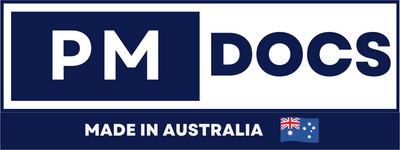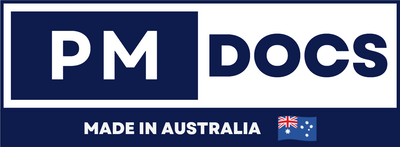ISO 22301
Introduction
ISO 22301 is an international standard for business continuity management that provides a framework for organizations to protect against, prepare for, respond to, and recover from disruptive incidents. Implementing ISO 22301 helps businesses establish a robust and effective business continuity management system that ensures the continued delivery of products and services, even in the face of unexpected disruptions. This blog post explores the fundamental principles and benefits of ISO 22301 and guides how organizations can achieve certification.

What is the ISO 22301 Business Continuity Management System?
- ISO 22301 is an international standard that provides a framework for implementing and managing a business continuity management system (BCMS). It is designed to help organizations establish, operate, monitor, evaluate, and improve their business continuity processes and capabilities.
- The ISO 22301 BCMS helps organizations identify and understand their critical business activities, potential risks and disruptions they may face, and develop strategies to minimize the impact of such events. It involves developing a business continuity plan that outlines the steps to be taken in the event of a disruption, ensuring the organization can continue operating or quickly recover its essential functions.
What does Implemented BCMS Mean?
Implemented BCMS stands for Implemented Business Continuity Management System. A Business Continuity Management System (BCMS) is a framework that helps organizations identify potential risks, assess their impact, and develop strategies and plans to ensure business continuity during unexpected disruptions or crises. When it is stated that a BCMS has been implemented, the system has been put in place. It is actively operational within the organization, incorporating various aspects such as risk assessment, business impact analysis, recovery strategies, and emergency response planning.
How to Become ISO 22301 Certified?
To become ISO 22301 certified, follow these steps:
- Understand ISO 22301: Before pursuing certification, thoroughly understand the ISO 22301 standard. Familiarize yourself with the requirements, principles, and processes outlined in the standard.
- Develop a Business Continuity Management System: Implement a BCMS within your organization that aligns with the ISO 22301 requirements. This entails identifying potential threats, assessing risks, developing strategies to mitigate those risks, and establishing adequate business continuity plans.
- Conduct a Gap Analysis: Identify areas where your business continuity management practices fall short of the ISO 22301 requirements. This will help you identify the necessary improvements and changes.
- Implement Improvements: Based on the gap analysis results, make the necessary improvements to your BCMS. Develop and implement policies, processes, and procedures to fill the identified gaps.
- Train Employees: Ensure your employees know the ISO 22301 requirements and understand their roles and responsibilities in maintaining business continuity. Conduct training programs and workshops to enhance their knowledge and skills.
- Conduct Internal Audits: Conduct internal audits to evaluate the effectiveness and compliance of your BCMS with the ISO 22301 standard. The audit should verify that your organization meets the requirements and identify non-conformities.
- Corrective Actions: Take corrective actions to address any non-conformities identified during the internal audit. Implement measures to rectify the issues and ensure that they do not recur.
- Choose an Accredited Certification Body: Select an accredited certification body to perform the external audit for ISO 22301 certification. The certification body should be recognized and accredited by a relevant accreditation body.
- External Audit: The certification body will conduct an external audit to determine if your organization's BCMS complies with the ISO 22301 standard. The audit will assess the effectiveness and implementation of your BCMS.
- Certification Decision: The certification body will decide based on the external audit results. If your organization meets all the requirements, it will be issued an ISO 22301 certification.
- Continual Improvement: Achieving certification is just the beginning. Improve your BCMS by monitoring, reviewing, and updating your business continuity plans. Regularly conduct internal audits and address any non-conformities that arise.

What are the Fees Associated with Obtaining ISO 22301 Certification?
The fees associated with obtaining ISO 22301 certification may vary depending on several factors, such as the certification body, the size and nature of the organization, and the level of support required. However, here are some standard fees associated with ISO 22301 certification:- Certification Body Fees: This includes the fees charged by the certification body for conducting the assessment, reviewing documentation, and issuing the certification. The fees can vary, including a fixed fee, assessment fee, surveillance fee, and certification fee.
- Auditing Fees: Organizations are required to undergo an initial certification audit, as well as regular surveillance audits, to maintain certification. Fees will be charged for these audits, which may vary based on the size and complexity of the organization.
- Training and Consultancy Fees: Many organizations seek assistance from training providers or consultants to prepare for ISO 22301 certification. The fees can vary depending on the scope and duration of the training or consultancy services.
- Documentation and Implementation Costs: Organizations may need to invest in developing or updating their business continuity management system (BCMS) documentation to comply with ISO 22301 requirements. This cost can vary depending on the resources allocated to documenting the BCMS and implementing necessary changes.
Why do you Need ISO 22301 Certification?
ISO 22301 certification is a globally recognized business continuity management systems (BCMS) standard. Here are some reasons why organizations may seek ISO 22301 certification:- Legal and Regulatory Compliance: ISO 22301 certification helps organizations comply with legal and regulatory requirements related to business continuity. It ensures the organization has implemented adequate measures to manage disruptions and mitigate risks.
- Competitive Advantage: ISO 22301 certification demonstrates the organization's commitment to business continuity. It can give the organization a competitive edge, reflecting a higher reliability and preparedness level than non-certified competitors.
- Customer Confidence: ISO 22301 certification enhances customer confidence and trust in the organization's ability to deliver products or services, even during disruptive events consistently. It assures customers that the organization has contingency plans to minimize any potential impact on its operations.
- Improved Resilience: Implementing ISO 22301 helps organizations develop a robust and resilient business continuity management system. It enables effective planning, response, and recovery from disruptive incidents, reducing downtime and minimizing financial losses.
- Stakeholder Trust: ISO 22301 certification builds trust among stakeholders, such as shareholders, partners, and suppliers. It shows that the organization has taken necessary steps to protect its interests and investments by implementing an internationally recognized standard for business continuity.
- Enhanced Risk Management: ISO 22301 certification promotes a proactive approach to risk management. It encourages organizations to identify potential disruptions, assess their impact, and develop strategies to mitigate risks and ensure timely recovery.
- Organizational Efficiency: ISO 22301 certification streamlines business processes and improves organizational efficiency. It establishes clear roles and responsibilities during a crisis, ensures effective communication, and facilitates coordinated actions, reducing confusion and minimizing downtime.
- Business Continuity Culture: Seeking ISO 22301 certification creates a business continuity culture within the organization. It raises awareness about the importance of preparedness and resilience among employees, fostering a proactive mindset and encouraging continuous improvement.

What are The ISO 22301 Clauses?
The ISO 22301 standard consists of 10 clauses, as follows:
- Scope: This clause defines the purpose and applicability of the ISO 22301 standard.
- Normative References: Specifies the documents referenced within ISO 22301.
- Terms and Definitions: Provides a common understanding of key terms used in the standard.
- Context of the Organization: Requires organizations to determine and understand their external and internal context and the needs and expectations of interested parties.
- Leadership: This section addresses the responsibilities and commitment required to establish and maintain a business continuity management system (BCMS).
- Planning: Outlines determining the organization's business continuity management policy and objectives and establishing a framework for managing risks and opportunities.
- Support: This section focuses on resource management, competence, awareness, communication, and documentation needed to support the BCMS.
- Operation: Covers implementing business continuity processes, including incident response, business recovery, and continuity planning.
- Performance Evaluation: Specifies the monitoring, measurement, analysis, and evaluation processes to ensure the BCMS's effectiveness and continual improvement.
- Improvement: This clause requires organizations to identify and implement opportunities for improvement in the BCMS based on the evaluation process mentioned in clause 9.
What are ISO 22301 Controls?
- ISO 22301 Controls refers to the set of measures and procedures outlined in the ISO 22301 standard, an international standard for business continuity management systems. These controls help organizations establish, implement, maintain, and continually improve their business continuity management systems.
- The ISO 22301 Controls include a range of requirements and guidelines that organizations need to follow to effectively prepare for, respond to, and recover from disruptive incidents or disasters. These controls cover various aspects of business continuity management, such as risk assessment and analysis, business impact analysis, development of business continuity strategies and plans,

How Much Time Is Required to Obtain ISO 22301 Certification?
- The time required to obtain ISO 22301 certification can vary depending on several factors, including the size and complexity of the organization, the level of readiness for implementing the standard's requirements, and the availability of resources. On average, it can take anywhere from 6 to 18 months to achieve ISO 22301 certification.
- The process typically involves several stages, including gap analysis, development and implementation of a Business Continuity Management System (BCMS), internal audits, management review, and a certification audit conducted by an external certification body.
- During the gap analysis stage, the organization assesses its current state of business continuity management against the requirements of ISO 22301. This helps identify the gaps and areas that need improvement in the standard.
- The BCMS development and implementation stage involves defining policies and procedures, establishing processes and controls, conducting risk assessments, developing business continuity plans, and conducting employee training and awareness programs.




